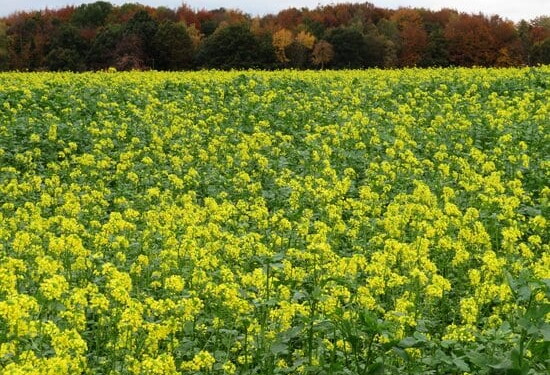Höxter (wrs) – Yellow and white splashes of colour are currently eye-catching in the landscape: the colored fields are often yellow mustard or white oilradish. Both belong to the so-called intermediate fruits. However, not every intermediate fruit is currently blooming, they are also visible as a green plant cover on the field. Antonius Tillmann, Chairman of the Höxter Agricultural District Association, explains that the cultivation of these arable crops has many advantages: “Intermediate crops are real multi-talented.”
Fruit between fruits
The intermediate fruit prepares the following main fruits next year, such as potatoes, maize or sugar beet – which will come into the soil next spring – a good pre-fruit. “The plants that are now flowering have been sown in the summer after harvesting,” says the chairman. They are often not hardy, i.e. they die at sub-zero temperatures in winter and form a protective mulch pad that remains in the field.
“Their remains are incorporated into the soil in the spring and serve as a source of supply for soil organisms and later also for the following cultures,” says the chairman. The dead biomass revalues the arable soil and enriches the humus balance. For example, the plants provide food for living organisms such as earthworm, a breeding ground for soil bacteria, they bind nutrients in the soil, protect them from leaching and create the conditions for an optimal supply of nutrients for the subsequent fruit
Effective “green carpet”
You cover the farmland in winter with an effective “green carpet”. This protects the arable land from dehydration, erosion and weed development. Furthermore, the plants with their deep pile roots provide for a deeper loosening of the soil. “In addition, the flat vegetation offers protection and food for wild animals,” adds Tillmann.
Oil-horseradish and mustard are popular intermediate crops, he said, adding: “There are also many others, often they are applied in mixtures consisting of different intermediate fruits.”
In a nutshell,
the positive effects of intermediate crops are manifold. They are valuable for soil frinty, soil life and humus formation. They are a boon for the soil, the follow-up fruit and for the wild animals,” the chairman concludes.








